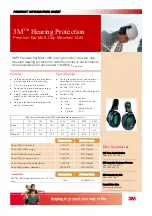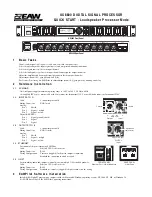
3 – 6
Circuitry
module’s output from the source. While the circuit is designed to
be safe for higher voltages, a set of gas discharge arrestors will limit
any potential di
ff
erence between the SIM chassis and the output ter-
minals to approx. 60 V
∼
80 V.
DO NOT ATTEMPT TO EXCEED THE
±
40
V EARTH
/
OUTPUT PO-
WARNING
TENTIAL!
An active floating ground reference made of U607 and Q613
/
Q614
creates a virtual 1.5 V grounding point (relative to the battery cath-
ode) which allows the regulator to reduce the output voltage all
the way to 0 V without loosing linearity and precision. Dual pre-
regulators Q502
/
D503 and U506 increase common mode rejection
and stability of the reference voltage source, the DAC and the feed-
back opamp.
The DAC’s output voltage is programmed by the microcontroller
through an optically isolated (U501–U504) serial interface. Since
the batteries can only supply unipolar 24 V, polarity inversion is
implemented with a relay switch K501
/
K502 by commutating the
output terminals. The module’s firmware makes sure that polarity
switching only happens when the regulator output voltage is 0 V. A
passive output filter L501,L502,C506,C507 limits output noise and
increases stability for passive capacitive and inductive loads.
3.1.5
Display and buttons
The SIM928 display is fully static to minimize noise. Display and
LEDs are driven and buttons are read by shift registers which hold
their state without firmware update. The microcontroller only reads
from and writes to these registers when display updates are necessary
or the user presses one of the buttons.
SIM928
Isolated Voltage Source


































